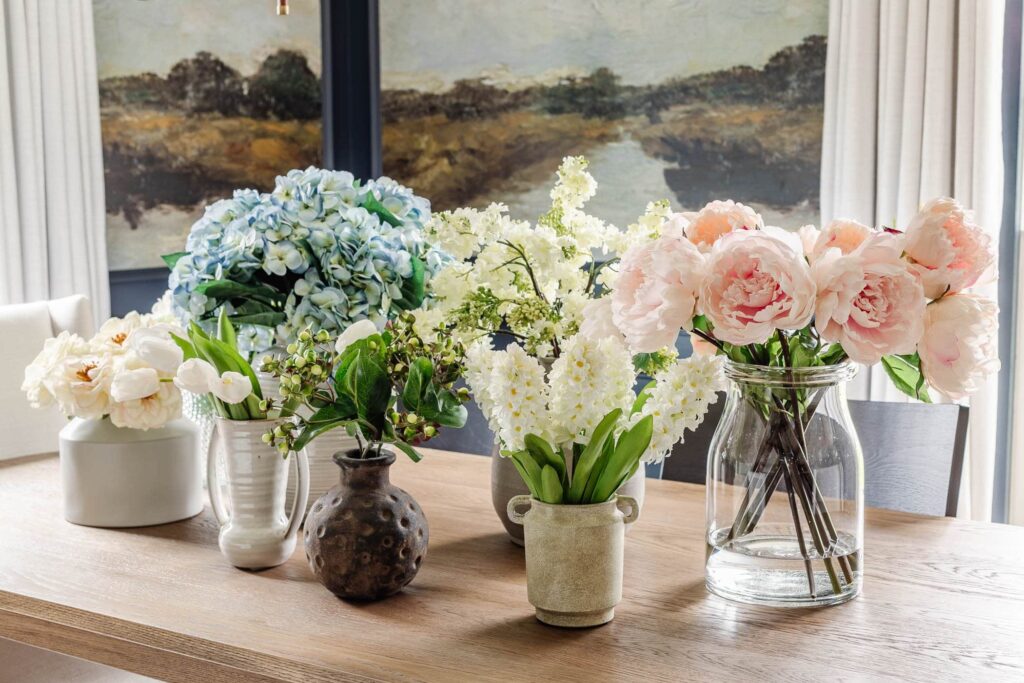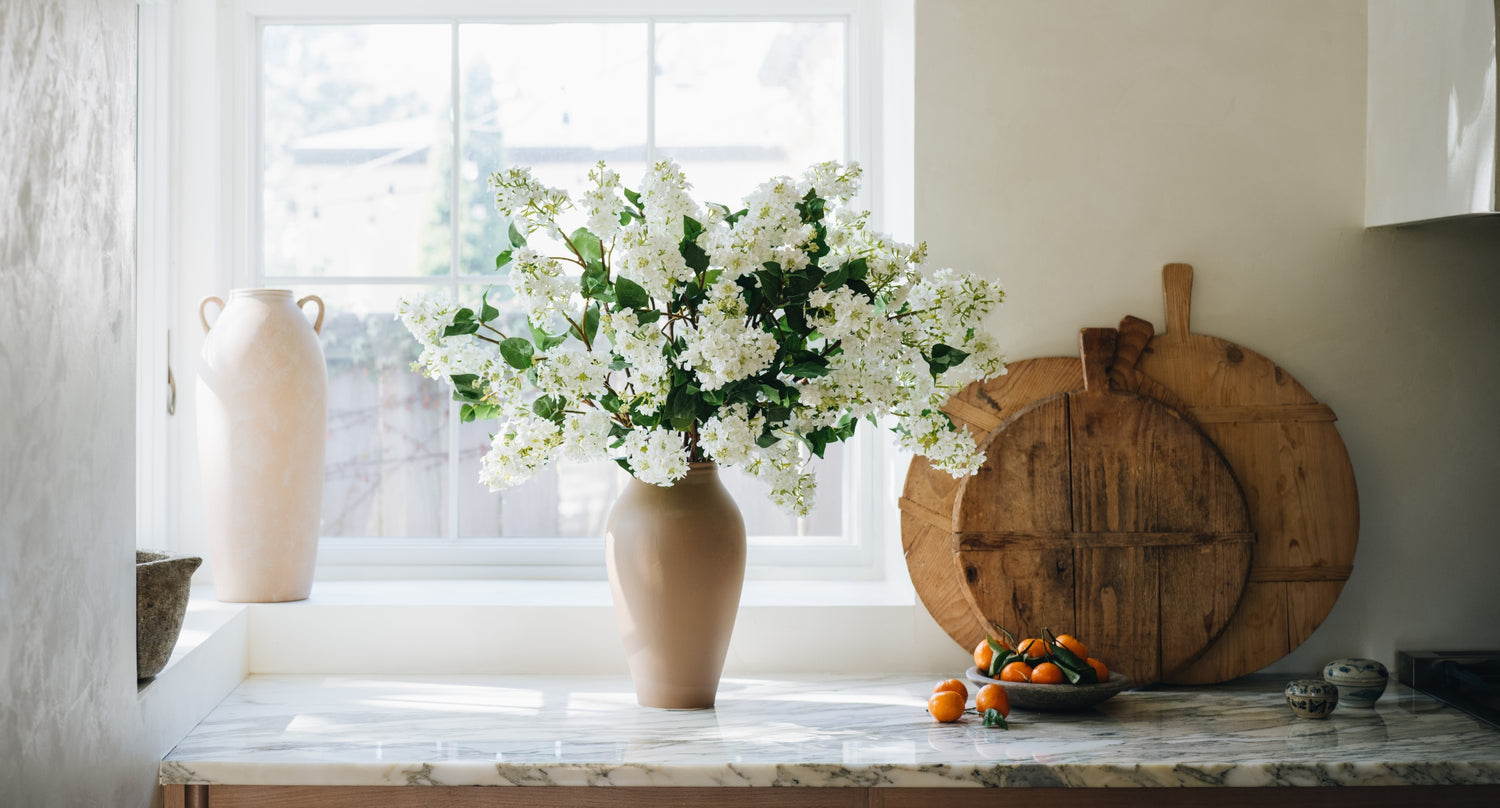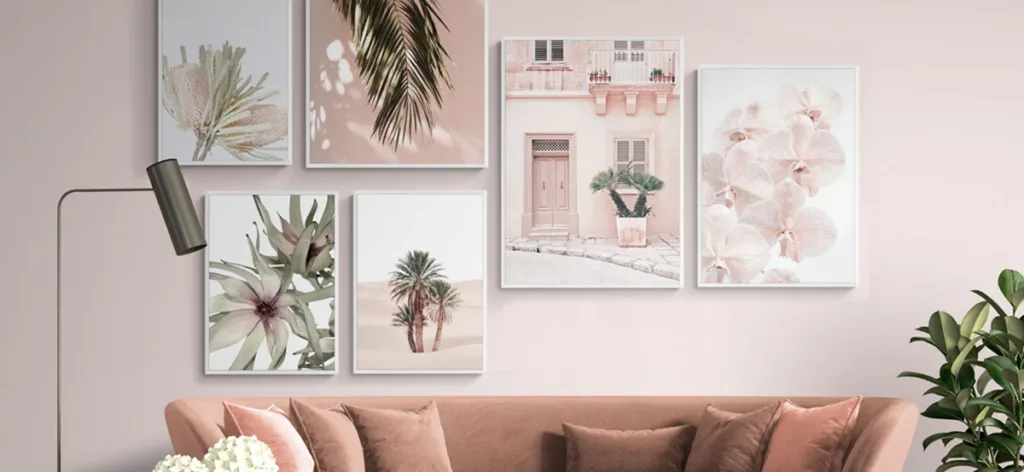News
Blooming Elegance: Transforming Spaces with Flower Art
Part 1: The Emotional and Aesthetic Power of Flower Art
Flower art holds a timeless allure, capturing the delicate beauty, vibrancy, and fleeting essence of nature. Across cultures and centuries, artists have drawn inspiration from blossoms, petals, and blooms to create works that evoke emotion, tell stories, and transform spaces. From classical oil paintings of intricate bouquets to contemporary abstract interpretations, flower art resonates universally, combining aesthetic charm, emotional depth, and symbolic richness.
1. Historical and Cultural Significance of Flowers in Art
Flowers have been a central motif in art for millennia, reflecting human fascination with beauty, life cycles, and nature.
European Tradition: During the Renaissance, Dutch Golden Age painters such as Jan Brueghel the Elder and Rachel Ruysch specialized in intricate floral still lifes, showcasing meticulous detail, texture, and naturalism. These works symbolized wealth, the passage of time, and the transient nature of life, known as vanitas. French Impressionists like Monet and Renoir celebrated flowers through gardens, meadows, and flower beds, emphasizing color, light, and emotional resonance over precise detail.
Asian Interpretations: In China and Japan, flower imagery has long conveyed cultural symbolism. Cherry blossoms (sakura) represent the ephemeral beauty of life, peonies symbolize wealth and honor, and lotus flowers embody purity and spiritual enlightenment. Traditional ink and watercolor paintings capture the essence, flow, and energy of blooms, often leaving space for contemplation and harmony with nature.
Middle Eastern and Indian Art: Floral motifs in Persian miniatures, Mughal paintings, and architectural patterns convey opulence, spirituality, and intricate design. Flowers often represent paradise, divine beauty, and human connection to the natural world.
Modern and Contemporary Approaches: Today, flower art spans abstract compositions, large-scale installations, photography, and mixed media. Artists continue to explore color, form, and emotion, ensuring the timeless relevance of floral imagery in contemporary interiors.
Across history and geography, flowers have symbolized life, renewal, beauty, and the transient nature of existence, making flower art both universally appealing and deeply personal.
2. Psychological and Emotional Benefits
Flower art has a profound impact on mental well-being, mood, and emotional balance:
Serenity and Calm: Soft petals, gentle hues, and flowing compositions evoke relaxation, tranquility, and mindfulness. Viewing a blooming garden in artwork can simulate the calming effect of nature, reducing stress and anxiety.
Joy and Positivity: Bright, vibrant blooms energize spaces and uplift spirits. Sunflowers, daisies, and tulips bring cheer, optimism, and a sense of vitality to rooms.
Inspiration and Creativity: Flowers encourage exploration of color, texture, and form. Artistic floral compositions inspire creativity, imagination, and artistic expression.
Connection to Nature: Flower art fosters a sense of harmony and connection with the natural world, especially for those living in urban or indoor environments. It bridges the gap between indoors and the vibrant, ever-changing beauty of the outdoors.
Memory and Nostalgia: Certain blooms may evoke personal memories—childhood gardens, favorite flowers, or cherished experiences—creating emotional depth and resonance within the space.
Through these effects, flower art transcends decoration, becoming a source of emotional nourishment, mental clarity, and daily inspiration.
3. Aesthetic Principles in Flower Art
The visual appeal of flower artwork rests on composition, color, texture, and balance:
Composition and Focal Points: Artists often use the arrangement of blooms, stems, and foliage to guide the viewer’s eye, creating depth, focus, and movement. Central flowers may serve as focal points, while surrounding details add complexity and harmony.
Color Harmony: Color choices dramatically influence mood. Cool blues and purples evoke calmness; warm reds, oranges, and yellows inspire energy; soft pastels create tenderness and intimacy. Strategic color contrasts can highlight petals, leaves, and light reflections.
Light and Shadow: Mastery of light enhances dimensionality, texture, and realism. Sunlit petals, dappled shadows, and reflective surfaces evoke natural light, adding life and vibrancy to the artwork.
Texture and Medium: Different media create varied tactile experiences. Oils offer richness and depth, watercolors convey delicacy and transparency, acrylics allow bold experimentation, and mixed media introduce tactile elements for interactive appeal.
Movement and Flow: Flowers in wind, water, or cascading arrangements convey energy and dynamism. The suggestion of motion keeps the composition lively and engaging.
Perspective and Scale: Close-up depictions invite intimacy with petals and details, while expansive floral landscapes create immersion, drawing viewers into a garden-like experience.
4. Symbolism in Flower Art
Flowers carry rich symbolic meaning, often layered with cultural, emotional, and personal significance:
Life and Renewal: Blooms symbolize growth, renewal, and the cyclical nature of existence. Seasonal flowers capture the passage of time and the promise of regeneration.
Love and Connection: Roses, tulips, and orchids often represent love, affection, and intimate connections, making flower art ideal for personal spaces or gifts.
Purity and Tranquility: Lilies, lotuses, and cherry blossoms symbolize purity, peace, and mindfulness, fostering a contemplative atmosphere.
Resilience and Strength: Flowers thriving against harsh conditions or storms convey perseverance, courage, and resilience.
Joy and Celebration: Bright, abundant blooms evoke happiness, optimism, and festivity, enhancing the mood and energy of a space.
Understanding symbolism allows individuals to select artwork with emotional depth, creating meaningful connections that extend beyond visual beauty.

5. Types and Styles of Flower Artwork
Flower art comes in varied styles, each offering unique aesthetic and emotional experiences:
Realistic Still Lifes: Detailed, precise depictions emphasize texture, depth, and natural beauty. Ideal for traditional or classic interiors.
Impressionistic Works: Focus on light, color, and movement rather than exact detail. Offer softness, atmosphere, and emotional resonance.
Abstract Interpretations: Explore form, color, and energy in unconventional ways, ideal for modern or contemporary décor.
Watercolor Paintings: Soft, flowing washes evoke delicacy, fragility, and subtle beauty, perfect for intimate spaces.
Oil and Acrylic Pieces: Rich textures and layered colors convey vibrancy, drama, and visual depth.
Mixed Media and Sculptural Art: Tactile elements, metallic accents, or layered textures enhance dimensionality and engagement.
Photography and Prints: Capture real-life flowers, garden landscapes, and fleeting moments of beauty, offering realism, flexibility, and accessibility.
6. Connecting Personally with Flower Art
Flower art becomes most impactful when personally meaningful:
Memory and Experience: Artworks reflecting favorite flowers, gardens, or personal experiences evoke nostalgia and emotional warmth.
Mood and Ambiance: Soft pastel flowers create calm, bright blooms energize, and dynamic arrangements inspire action or creativity.
Narrative and Storytelling: Series or collections can depict seasonal changes, floral growth stages, or garden explorations, creating immersive storytelling experiences.
Symbolic Resonance: Select flowers that reflect personal values, aspirations, or emotional themes, enhancing the artwork’s significance.
Through personal connection, flower art transcends decoration, becoming a companion to memory, emotion, and inspiration.
7. Integrating Flower Art into Interiors
Flower artwork enhances various interior styles:
Classic and Traditional: Realistic paintings or oil still lifes harmonize with warm tones, ornate furniture, and soft lighting.
Modern and Contemporary: Abstract, impressionistic, or bold-color flowers provide contrast and focal points within minimalist or modern spaces.
Eclectic Spaces: Mixing flower art with other themes or mediums adds layers of visual and emotional interest.
Bedrooms and Retreats: Soft, gentle florals promote relaxation, serenity, and restorative ambiance.
Workspaces: Vibrant or dynamic floral compositions stimulate creativity, focus, and inspiration.
Proper integration ensures that flower art enhances both aesthetic appeal and emotional atmosphere.
8. Light, Space, and Perspective
Lighting, placement, and perspective dramatically influence the visual and emotional effect of flower artwork:
Natural Light: Sunlight enhances petals’ vibrancy, texture, and color depth.
Accent Lighting: Spotlights or picture lights emphasize details, texture, and focal elements.
Scale and Proportion: Choose artwork size relative to wall space and furniture for balance and harmony.
Viewing Angles: Position pieces to maximize appreciation of key details and color interactions.
9. Emotional and Narrative Engagement
Flower art creates narrative depth and emotional resonance:
Blooming Gardens: Represent growth, life cycles, and joy.
Delicate Petals: Encourage reflection, mindfulness, and calm.
Dramatic Arrangements: Inspire energy, dynamism, and creative engagement.
Seasonal Themes: Capture the ephemeral beauty of spring, summer, autumn, or winter blooms.
Through storytelling, flower art engages viewers, evokes emotion, and transforms interiors into environments of inspiration, serenity, and beauty.
10. Conclusion: The Timeless Appeal of Flower Art
Flower art combines visual beauty, emotional depth, and symbolic richness. By selecting compositions, colors, themes, and media thoughtfully, homeowners can transform interiors into spaces of tranquility, inspiration, and personal resonance. Whether capturing a sunlit garden, a delicate bouquet, or an abstract floral interpretation, flower art celebrates life, nature, and the enduring human connection to beauty, enriching both aesthetic and emotional experiences.
Part 2: Selecting the Perfect Flower Artwork
Choosing the perfect flower artwork is both an artistic and emotional journey. Flower art can transform a space, evoke memories, inspire creativity, and bring serenity into daily life. Selecting a piece involves careful consideration of space, theme, color, scale, medium, framing, and personal resonance. Every decision, from the type of flower depicted to the texture of the paint, contributes to the overall impact of the artwork.
1. Understanding Your Space
Before selecting flower art, it is essential to consider where it will be displayed. The artwork should harmonize with the room’s purpose, layout, and lighting conditions.
Living Rooms: Large-scale floral pieces or vibrant, colorful bouquets can serve as a striking focal point. Calm arrangements, such as soft pastels or watercolors, invite relaxation and conversation, while bright, dynamic blooms energize the room.
Bedrooms: Opt for softer, serene compositions. Gentle color palettes, subtle textures, and flowing arrangements create a peaceful and intimate atmosphere conducive to rest and reflection.
Workspaces and Studios: Bold, dynamic floral artwork stimulates creativity, focus, and inspiration. Abstract or impressionistic florals encourage visual exploration and imaginative thinking.
Entryways and Hallways: Smaller floral pieces or thematic clusters set a welcoming tone. They can evoke elegance, warmth, and sophistication without overwhelming the space.
Understanding the space helps guide scale, color choice, and style, ensuring the artwork complements both environment and mood.
2. Choosing Themes and Mood
Flowers offer a broad spectrum of thematic possibilities, each evoking specific emotions:
Serene Gardens: Soft, delicate petals in calm compositions promote mindfulness and tranquility. Ideal for bedrooms or meditation areas.
Vibrant Bouquets: Bright, full blooms create energy and optimism, enhancing living rooms, dining areas, or creative spaces.
Wildflowers and Meadows: Convey freedom, natural beauty, and whimsy. Perfect for casual, eclectic, or nature-inspired interiors.
Seasonal Blooms: Capture the essence of spring, summer, autumn, or winter. Seasonal flower art can provide variety and thematic rotation throughout the year.
Abstract Floral Art: Explores color, form, and emotion, making it ideal for contemporary or modern spaces.
Dramatic Arrangements: Dark backgrounds, intense lighting, or rich textures convey depth, intensity, and emotional resonance.
Choosing a theme aligned with the desired emotional atmosphere ensures that the artwork will resonate with both inhabitants and visitors.
3. Color Palette Considerations
Color profoundly influences the perception, mood, and harmony of flower artwork:
Cool Tones: Blues, purples, and soft greens evoke calmness, serenity, and introspection.
Warm Tones: Reds, oranges, and yellows energize and uplift, stimulating vitality and cheer.
Pastels: Soft pinks, lilacs, and peaches promote tenderness, intimacy, and subtle elegance.
Neutral Backgrounds: Whites, creams, or muted grays allow flowers to stand out while maintaining balance and sophistication.
Contrasting Colors: Strategic use of contrast highlights focal blooms, enhances depth, and creates visual interest.
Harmony with Decor: Ensure the palette complements existing furniture, textiles, and wall colors to maintain cohesive design.
4. Scale and Proportion
The size of floral artwork determines visual impact and room harmony:
Large-Scale Pieces: Command attention and create immersive experiences. Perfect for living rooms, dining areas, or feature walls.
Medium-Sized Works: Offer versatility for gallery walls, grouped displays, or thematic clusters. Suitable for corridors, offices, or bedrooms.
Small Pieces: Provide intimate charm, ideal for bedside tables, nooks, or accent areas.
Balance the artwork with furniture size, wall space, and room dimensions to avoid overwhelming or underwhelming the space.
5. Medium and Texture
The medium defines visual quality, texture, and emotional tone:
Oil Paintings: Rich texture, depth, and timeless elegance. Ideal for realistic or classic floral compositions.
Acrylics: Vibrant colors and versatility. Suitable for bold, contemporary interpretations.
Watercolors: Soft, flowing washes convey delicacy and tranquility, perfect for intimate or serene spaces.
Mixed Media: Layered textures, metallic accents, or sculptural elements add dimension and tactile engagement.
Photography and Prints: Capture realism, fleeting light, and ephemeral beauty. Accessible, flexible, and suitable for rotational display.
Sculptural or 3D Floral Art: Adds a tactile and immersive experience, engaging viewers beyond visual observation.
6. Framing and Presentation
Framing enhances both aesthetic appeal and longevity:
Classic Frames: Wooden, gilded, or ornate frames suit traditional or vintage interiors.
Minimalist Frames: Sleek and simple, focusing attention on the artwork itself. Ideal for contemporary or modern décor.
Floating Frames: Create depth and subtle sophistication, giving the impression of suspension.
Matting: Provides breathing space and emphasizes key elements. Neutral mats maintain subtlety; colored mats accentuate flower tones.
Proper framing protects the artwork and elevates its visual impact, ensuring long-term enjoyment.
7. Personal Resonance and Symbolism
Flower art is most meaningful when emotionally significant:
Memory and Nostalgia: Flowers that recall personal experiences—gardens, vacations, or gifts—create emotional connection.
Mood Alignment: Choose works that enhance the intended emotional atmosphere of a space—serenity, joy, energy, or contemplation.
Narrative and Storytelling: A series depicting seasonal changes, floral growth, or diverse gardens offers immersive storytelling.
Symbolic Meaning: Roses for love, lilies for purity, sunflowers for positivity—symbolic associations deepen emotional engagement.
Selecting artwork with personal and symbolic resonance ensures enduring value and emotional fulfillment.
8. Coordinating Multiple Pieces
Curating multiple floral artworks creates dynamic, cohesive displays:
Gallery Walls: Mix sizes, styles, and perspectives to establish rhythm and intrigue.
Thematic Collections: Arrange works around seasons, colors, or flower types to maintain continuity.
Triptychs or Series: Sequential works capture movement, growth, or garden evolution, enhancing storytelling potential.
Spacing and Balance: Proper distance between pieces prevents clutter, ensuring each artwork is appreciated individually and collectively.
Thoughtful coordination enhances visual impact and narrative depth.
9. Practical Considerations
Practical aspects ensure long-lasting enjoyment and preservation:
Lighting: Natural light enhances colors and reflections; accent lighting highlights textures and focal points. Avoid direct sunlight to prevent fading.
Placement Height: Position artworks at eye level for optimal viewing. Consider furniture, ceiling height, and sightlines.
Environmental Conditions: Control humidity, temperature, and ventilation for medium-sensitive works like watercolors or paper prints.
Rotational Display: Seasonal or thematic rotation keeps the space engaging and fresh.
By addressing these practical factors, floral artwork retains beauty and vibrancy over time.
10. Investment in Quality
Investing in high-quality flower artwork ensures lasting visual and emotional impact:
Materials: Archival-quality paper, durable canvas, and premium framing extend longevity.
Artisan Skill: Detailed brushwork, texture, and composition elevate both aesthetic and emotional value.
Presentation: Professional mounting, framing, and lighting maximize visual appeal and protect the investment.
High-quality flower art becomes a treasured focal point that continuously inspires and delights.

11. Final Thoughts on Selection
Selecting the perfect flower artwork requires a balance of practical considerations, aesthetic sensibility, and personal connection. By evaluating space, theme, color, scale, medium, framing, and emotional resonance, homeowners can ensure their floral artworks enhance interior beauty, evoke joy, and foster reflection. From serene pastels to vibrant, expressive bouquets, carefully chosen flower art transforms any room into a sanctuary of inspiration, beauty, and timeless elegance, enriching both visual appeal and emotional experience.
Beyond technical considerations, it is essential to reflect on the emotional and experiential impact that flower art brings into a home or workspace. A single bloom, captured with delicate brushwork, can evoke a sense of intimacy and mindfulness, encouraging viewers to pause and connect with the moment. Similarly, a vibrant bouquet, bursting with color and life, can energize a room, inspire creativity, and elevate the overall atmosphere. When selecting flower artwork, consider how each piece interacts with daily experiences—whether it calms the mind, sparks imagination, or celebrates life’s fleeting beauty.
Another important aspect is integration with existing décor. Flower art naturally complements interiors with natural materials, such as wood, stone, or linen, but it can also create striking contrasts in modern or minimalist settings. For instance, a bright, abstract floral painting on a stark white wall becomes a dramatic focal point, while soft pastel flowers on a muted background enhance subtle elegance and cohesion. Accessories and furnishings, such as cushions, rugs, and decorative vases, can echo floral colors or motifs, creating harmony and reinforcing the theme without overwhelming the space.
For those curating collections or series of flower artworks, consider storytelling through sequence and variation. A series may depict different stages of bloom—from bud to full blossom—or seasonal transitions, offering a dynamic, immersive experience that evolves with time. Such arrangements encourage viewers to engage with the pieces individually and collectively, deepening appreciation and emotional connection. Similarly, pairing floral artwork with complementary artworks, such as nature-inspired landscapes or abstract pieces, can create layered narratives and enrich the room’s visual language.
Lighting plays a crucial role in enhancing the visual and emotional resonance of flower artwork. Natural light can illuminate petals, highlight subtle textures, and bring out vibrant hues. Soft, warm accent lighting can emphasize depth, shadow, and dimensionality, enhancing both realism and atmosphere. Conversely, carefully chosen backlighting or spotlights can create dramatic effects, transforming the perception of the artwork and shifting the mood of the room. Considering the angle, intensity, and quality of light ensures that each piece is seen at its best.
Finally, the personal connection and symbolic meaning of flower art solidify its lasting value. Flowers often carry cultural, spiritual, or emotional symbolism—roses for love, lilies for purity, sunflowers for joy, and orchids for strength and elegance. Selecting artwork that resonates with your personal experiences, memories, or aspirations makes it more than decoration; it becomes a meaningful companion in your daily environment. This connection fosters not only aesthetic pleasure but also emotional nourishment, making flower art a source of inspiration, comfort, and personal expression.
By considering space, theme, color, scale, medium, framing, lighting, and personal resonance, homeowners and designers can select flower artwork that transforms interiors into spaces of beauty, reflection, and emotional richness, ensuring that each piece remains a cherished centerpiece for years to come. Thoughtful selection and curation allow floral art to fulfill its ultimate purpose: to celebrate life, evoke joy, and create harmony between nature and human experience.
Ultimately, choosing the perfect flower artwork is about balancing aesthetics, personal meaning, and spatial harmony. Each piece should not only complement the décor but also evoke emotion, inspire reflection, and celebrate the beauty of life. When thoughtfully selected, floral art transforms a room into a sanctuary of inspiration, serenity, and timeless elegance, creating lasting joy for all who encounter it.

